New Marine Archaeology Discoveries made in 2019 will appear below
as we become aware of them …
“Return to the Antikythera shipwreck as underwater archaeology resumes”
Octber 06 2019, Neos Kosmos, Greece
“The underwater archaeological survey at the Antikythera shipwreck that has been suspended since 2017 will soon resume, according to an announcement on Friday by the Ekaterini Laskaridi Institution, which is supplying the research vessel ‘Typhoon’ for the needs of the project.
‘The aim of the archaeological survey that will start in the next few days is the recovery of antiquities, to update the mapping of the archaeological site and evaluate the condition of the shipwreck after two years’, said the statement.
The long-time director of the survey, Dr Angeliki Simosi, head of the Evia Antiquities Ephorate, will once again lead the mission, which includes a team of exceptional Greek scientists of various disciplines, including marine archaeologists, scuba divers, cameramen and a team of four deep-sea divers in the Greek coast guard Underwater Missions Unit.”
[Read The Full Story]
[Excellent news! Let us all hope they will continue to make more discoveries related to the Antikythera Mechanism. It’s not a long story but well worth a visit to read it, and follow the links – Polly]
“China’s NCHA announces two major archaeological achievementss”
August 07 2019, Global Times, China
“China’s National Culture Heritage Administration (NCHA) announced two important archaeological achievements at a conference on Tuesday.
According to the conference, the Nanhai I, a Song Dynasty (420-479) shipwreck discovered off the coast of South China’s Guangdong Province in 1987, has been named the best-preserved ancient shipwreck in China.
With a length of 22.95 meters and a width of 9.85 meters, the shipwreck’s hull remains relatively intact.
The archaeological team has recovered more than 180,000 cultural relics from the wreck, demonstrating the prosperous overseas trade system that existed in China during the Song Dynasty (960-1279).
Archaeological work on the Nanhai I has lasted for more than 30 years”
[Read The Full Story]
[It’s good to hear more about the discoveries being made by the long-term project run by China’s marine archaeologists at the Nanhai 1 site. The story is not a long one but well worth a visit to read it – Polly]
“Mysterious temple discovered in the ruins of
sunken ancient city”
July 26 2019, 9 News, Australia
“A mysterious destroyed temple has been discovered in the ruins of an ancient Egyptian city that sunk into the sea some 1200 years ago.
The sunken city of Heracleion – also dubbed the ‘Egyptian Atlantis’ – was lost in the waters off Egypt’s north coast for centuries until it was first uncovered in 2000.
Constant studies have been undertaken at the location since the discovery, with researchers recently uncovering the remains of a Greek temple and treasure-laden ships at the underwater site.
Bronze coins from the reign of King Ptolemy II (283 to 246 BC), ancient columns and 2000-year-old pottery were also among the astonishing new finds.
Heracleion was said to be Egypt’s main international trading port, but no trace of the lost city had been found until it was discovered in 2000 by the European Institute for Underwater Archaeology and Franck Goddio.
‘Its name was almost razed from the memory of mankind, only preserved in ancient classic texts and rare inscriptions found on land by archaeologists’, explained researchers.”
[Read The Full Story]
[What an excellent story from 9 News! The work of Franck Goddio and his team off the coast of Egypt in the Mediterranean is renowned amonst marine archaeologists as the high benchmark standard to be aimed at in all such underwater reserach.
It’s well worth a visit to read the full story and see the many great underwater photos and video of the marine archaeologists and the artifacts they are recovering from the sea floor – Ed.]
“Britain’s Atlantis: Evidence of Stone Age human activity
found beneath North Sea”
June ? 2019, The Independent, UK
“Archaeologists have found evidence of ancient human activity on Britain’s very own ‘Atlantis’.
Scientists investigating a drowned Stone Age landscape at the bottom of the North Sea have discovered two potential prehistoric settlement sites on the banks of a long-vanished ancient river.
It is the first time that an archaeological expedition has ever found such evidence far offshore under the huge body of water.
In the past, prehistoric artefacts have on occasions been trawled up by fishermen and found by oil exploration teams – but the seabed contexts they came from were never archaeologically assessed.
This time, the discoveries are part of a systematic archaeological survey.
The archaeologists – from Britain and Belgium – have found two highly significant stone artefacts in specific locations which were being deliberately investigated for ancient human activity.”
[Read The Full Story]
[A great story from The Independent. John has been saying for more than 20 years that evidence of ancient settlements are likely to be found underwater between UK and mainland Europe – if only they’d bother to look for them. He was dismissed as “Bonkers” by most of the mainstream archaeologists at the time in the mid-1990s.
Now they must wish they had listened to his unique insights much earlier. It’s worth a visit to read the full story and see how right John was all those years ago – Polly.]
“Underwater Fortress Found: Ancient Fort Linked to Bloody Biblical Battles Found Off Coast of Israel”
June 01 2019, Ancient Origins, Australia
“Underwater archaeology is helping to transform our knowledge of the ancient world.
In Israel, maritime archaeologists have discovered a 2,200-year-old Hellenistic fortress linked to biblical battles.
The discovery is helping us to understand Hellenistic military fortifications and strategies and the impact of rising sea levels on ancient communities.
The find was made at Tel Dor , which ‘overlooks the eastern Mediterranean on the southern Levantine coastline of Israel’, as the researchers wrote in the Journal of Maritime Archaeology.
It is now known as the beach of Kibbutz Nahsholim and is due south of the bustling city of Haifa.
There is a natural harbor there and that means that it was excellent for the anchorage of ships.
Tel Dor is a site that has revealed evidence of Phoenician, Hebrew, Roman, and Byzantine occupation and it has a long and often bloody history.
[Read The Full Story]
[What an intelligent opening sentence!. This is something John has been saying for the past 25 years and more, and the reason The Morien Institute has focussed on bringing marine archaeology to the attention of all our visitors. It’s worth a visit to read the full story and see the great underwater image of the diver and the remains of the fort – Polly.]
“Search for Cortés’ ships turns up 15th-century anchor
off Veracruz”
May 01 2019, Mexico News Daily, Mexico
“Could an anchor half buried in the ocean floor off Veracruz be part of the wreckage of one of the scuttled ships of conquistador Hernán Cortés?
The Spanish adventurer had two options in 1519: face mutiny or quell a rebellion by scuttling 10 of his 11 ships, which would give the crews no option but to move inland with him toward the heart of the Mexica empire.
He chose the latter option, which has led to a project whose goal is to locate the remains of Cortes’ fleet.
This week, that project, headed by archaeologist Roberto Junco Sánchez and anthropologist Chris Horrell, made its first significant find – an anchor dating back to the 15th century with wood still attached to it, identified as being a type of oak found only in northern Spain.
[Read The Full Story]
[Interesting find! There must be many, many more artigfacts to be discovered off the Mexico coast. It’s worth a visit to read the full story and see the underwater image of the diver and the anchor – Ed.]
“High-altitude divers find ritual relics”
April 02 2019, DiverNet, UK
“Divers have investigated a South American repository for offerings to the gods – in what they say is the first methodical archaeological excavation of a site in the world’s highest large lake.
The team found a range of valuable items at Khoa Reef, north of the Island of the Sun site in Bolivia’s Lake Titicaca.
The slightly saline ‘inland sea’, which lies in the Andes 3800m above sea level, was revered by early Andean people as the birthplace of the sun.
They once used the island, which today lies at depths of 5m or more, for their ceremonies to propitiate the gods.
Discoveries included ceramic cat-styled incense-burners and metal, shell and stone ornaments, including a lapis-lazuli puma, a turquoise pendant and gold medallions engraved with a ray-faced god.”
[Read The Full Story]
[Really interesting story on DiverNet! Votive offerings into lakes are found worldwide, due often because the ancient peoples who made tose offering regarding such bodiesa of water as ‘gateways to the underworld’.
It’s worth a visit to read the full story and see the great underwater image of a diver holding a find – Ed.]
“‘Incredibly rare’ find in Western Isles prehistoric forest”
January 16 2019, BBC News, UK
“Archaeologists have found evidence of early human activity at a submerged prehistoric forest in the Western Isles.
Lionacleit in Benbecula is one of more than 20 recorded sites of ancient woodland that once grew in the islands.
The remains included an early butchery site and stone tools used for preparing food.
Archaeologists have described the discoveries at Lionacleit as ‘extra special’.
They found the remains of the area where animals had been butchered for food during studies of the site last year.
Bone was also found with a piece of quartz from a stone tool and a quern stone, which was used for grinding food.”
[Read The Full Story]
[Great story from BBC News! The more we learn about what ancient peoples hunted, gathered and ate the better informed we become of ancient sophisticated societies, and this story adds to our knowledge of how, when and where that occurred.
Well worth a visit to read the full story – Ed.]
“Unearthing the ancient traces of China-Saudi Arabia exchanges”
January 18 2019, CGTN, China
“China and Saudi Arabia recently unveiled the achievements of their joint archeological exploration at the ruins of the al Serrian port, an important pilgrim-trade port in ancient times connecting the East and West.
The ruins of the port are located by the Red Sea, the southwestern part of the Arabian Peninsula.
It was deserted for unknown reasons and then covered up by sands.
Research of underwater conditions is also being conducted in hopes of learning more about the ancient channel here and finding more relics.
Results show that in the south of the site, there is a place that would have been a natural harbour for ship berthing and a channel for ships to move in and out.
The findings also include bronze weights, agates, coins, as well as Arabian pottery and glazed pottery from ancient Persia and China, signifying that the al Serrian area by the Red Sea was an essential maritime channel for East-West exchanges.”
[Read The Full Story]
[Another excellent story emerging from the Chinese media regarding the Maritime Silk Road in ancient times. The more these discoveries come into the public domain the more we realise how extensive maritime trade was in the remote past. This story offers a good example of that.
It’s well worth a visit to their site to read the full story – Ed.]
“Seagrass Safeguards Human History”
January 07 2019, Hakai Magazine, Canada
“From storing carbon to guarding against ocean acidification, seagrass is fundamental to keeping ocean ecosystems in balance.
But new research shows that seagrass meadows play another crucial, if overlooked, role: protecting shipwrecks and other underwater historical heritage.
Ancient weapons, prehistoric fishing tools, and textiles are just some of the items scientists have discovered buried beneath the protective cover of seagrass, says Oscar Serrano, a marine ecologist at Edith Cowan University in Australia.
Until now, Serrano says, no one has investigated the cultural value of seagrass meadows, which ‘play an important role in revealing clues about the human past.’
But archaeological techniques can negatively impact seagrass meadows since excavation, sometimes with explosives, is used to access study sites.
To highlight the link between seagrass and archaeological preservation, Serrano and his colleagues compiled evidence from the literature and from consultations with archaeologists in Denmark, Australia, the United States, and around the Mediterranean.
The team’s investigation revealed a clear pattern: some of the world’s best-preserved underwater archaeological sites are sealed beneath blankets of seagrass.”
[Read The Full Story]
[What a brilliant way to start the new year with a call for less invasive techniques to be used in marine archaeology. Suggesting that other methods such as acoustic and seismic measurements, which would help maintain seagrass beds, marine ecologist, Oscar Serrano, has highlighted the past destructive exacavation methods which seem to have destroyed almost as much as eventually gets preserved.
Let us hope that others heed Serrano’s call for a some common sense to be deployed before the old destructive methods are ever used again, and well done Hakai Magazine for publishing this excellent article! It’s well worth a visit to their site to read the full story – Ed.]

Marine Archaeology Discoveries made in 2018
are listed below …
“Exploring the watery remains of France’s
sunken Roman port of Olbia”
November 30 2018, PhysOrg, USA
“Stretching over four sandy kilometres Almanarre beach in southern France is a mecca for sun lovers and kite surfers.
But its greatest treasure-a 2,000-year-old underwater archaeological site-lies just a few feet offshore.
Welcome to the port of the ancient Roman city of Olbia, which fell victim to a slow rise in Mediterranean waters, but is still open for visits from explorers equipped with a snorkel mask and pair of flippers.
A collection of rectangular limestone blocks, some perfectly aligned, others scattered about on the seafloor, make up the watery remains of the dock of the city of Olbia, a fortified trading post founded by the Greeks in the 4th Century BC on the outskirts of the modern-day Riviera town of Hyeres.
After the capture of nearby Marseille by Julius Caesar in 49 BC the region gradually came under the control of the Roman empire, which endowed Olbia with a port in the 1st Century AD.”
[Read The Full Story]
[This an excellent story that we hope will encourage those interested in marine archaeology to don their snorkels and flippers and go and take a look at what is now sunk beneath the waves. It’s well worth a visit to their site to read the full story and see the many underwater images – Ed.]
“Dozens of Ancient Greek shipwrecks discovered
looted off Albanian coast”
November 20 2018, Tornos News, Greece
“Dozens of ancient ships, many of them dating back two millennia, are lying on the sea bottom 450 km off the coast of Albania, most of them originally laden with priceless antiquities that have recently been looted, according to an Athens-Macedonian News Agency report.
Most of the wrecks are Ancient Greek, Roman and Illyric ships, often loaded with treasures.
After the collapse of the Albanian Communist regime of Enver Hoxha, many of the precious shipwreck sites, with vessels carrying gold coins and priceless artifacts, have totally disappeared or been looted.
Illegal antiquities traffickers can make a fortune on the global market for ancient art and artifacts.
Inside Albania an ancient amphora found in the sea can fetch 100 euros, but on the worldwide art and antiquities markets its price can skyrocket, reaching hundreds of thousands of euros.”
[Read The Full Story]
[Is it not typical that antiquities are always some of the first casualties when one regime fails and parasites pour out of the woodwork to loot everything of monetary value with no concern for their cultural value, even to their own communities. Well done Tornos News for highlighting this incident. It’s well worth a visit to their site to read the full story and see the underwater image – Ed.]
“Archaeologists discover oldest olive groves in Croatia
dating 3,500 years”
October 22 2018, Croatia Week, Croatia
“Archaeologists from Zadar have come across a variety of finds dating back to the Middle Bronze Age in the sea between the Isle of Ricul in the Pasman Channel and the coastal resort of Turanj, including numerous 3,500-years-old olive pits, which speak to the oldest olive groves along Croatia’s Adriatic.
In northern Dalmatia, little was known about the Middle Bronze Age until archaeologists began underwater explorations several years ago.
Well-preserved organic material trapped in thick marine growth layers has provided them with data they can very rarely obtain on land, enriching the knowledge about Pre-Liburnian communities living there about three millennia ago.”
[Read The Full Story]
[An excellent story from Croatia Week! We rarely hear much about Croatian antiquities, yet it was one of the most important areas in classical times snd much earlier. This story, only possible because of the focus on marine archaeology, is a welcome addition to the prehistory of the area and increases our understanding of those ancient times.
It’s well worth a visit to their site to read the full story and see the underwater and other images of the finds – Ed.]
“Ancient shipwrecks tell tale of trade routes”
October 12 2018, Hürriyet Daily News, Turkey
“Archaeologists in Greece have discovered at least 58 shipwrecks, many laden with antiquities, in what they say may be the largest concentration of ancient wrecks ever found in the Aegean and possibly the whole of the Mediterranean.
The wrecks lie in the small island archipelago of Fournoi, in the Eastern Aegean, and span a huge period from ancient Greece right through to the 20th century.
Most are dated to the Greek, Roman and Byzantine eras.
Although shipwrecks can be seen together in the Aegean, until now such a large number have not been found together.
Experts say they weave an exciting tale of how ships full of cargo travelling through the Aegean, the Mediterranean and the Black Sea met their fate in sudden storms and surrounded by rocky cliffs in the area.”
[Read The Full Story]
[Another good story from Hürriyet Daily News! The more they look the more they seem to find in the waters around the coast of Turkey, and it adds to the emerging picture of a flourishing sea trade in ancient times.
It raelly is well worth a visit to their site to read the full story and see the image of the finds in situ – Ed.]
“Deep dive into ancient history, off Xlendi”
October 01 2018, Times of Malta, Malta
“Some 110 metres underwater off the coast of Xlendi Bay there lay, for centuries, an archaeological treasure that is now warming the cockles of archaeologists and historians.
Unearthed in an expedition that was far from your ring-lost-in-the-sand search, the mesmerising shipwreck clasps intriguing artefacts dating back to 700 BC, knowing their origin to Phoenician traders.
And for the first time on these islands, a selection of the artefacts – from what Heritage Malta describes as the oldest wreck ever found in this region – are on public display, at the Cittadella in Gozo.”
[Read The Full Story]
[Good news from the Times of Malta! The exhibition looks brilliantly presented and is a must-see for those who can get there. Well worth a visit to their site to read the full story and see the images – Ed.]
“Under the sea: antiquities make way for
Israel’s Leviathan pipeline”
September 06 2018, Reuters, UK
“Underwater archaeologists have been scouring the seabed where a gas pipeline is being built off Israel’s coast in a bid to preserve relics near a 5,000-year-old port which once was a key trade hub for the Mediterranean’s ancient civilizations.
The pipeline from the deep-sea Leviathan gas field that is due to begin production late next year comes ashore near Dor Beach in northern Israel, a popular spot among Israeli sunbathers.
It is also the site of the ancient port of Dor, where hidden in the seabed lie the vestiges of marine traders throughout the ages – from the Phoenicians to the Romans.
To minimize damage to such relics, the Israel Antiquities Authority has been working over the past year with the Leviathan field’s operator, Texas-based Noble Energy.
A team spent weeks scuba diving in the warm crystal clear water off the beach, dispersing silt to uncover ancient artifacts. A remote-operated robot was used for searches in deeper water.
They found earthenware jugs, anchors and the remains of wrecked ships, setting new guidelines for similar future projects.”
[Read The Full Story]
[What a refreshing change to see such care being taken to rescue antiquities before a pipeline is laid. Makes you onder what went wrong at Standing Rock? It’s well worth reading the full story – Ed.]
“Remnants of ancient fortress found underwater
off Bulgaria’s St Thomas Island”
August 20 2018, The Sofia Globe, Bulgaria
“Underwater exploration around St Thomas Island on Bulgaria’s southern Black Sea coast by a team of specialist archaeological divers has led to the finding of what are believed to be the remnants of a wall of an ancient Thracian fortification.
St Thomas Island is 15km south of the Bulgarian seaside town of Sozopol and is a mere 0.012 square kilometres in size.
Two places with low concentrations of fragmented ceramics were mapped.
Several stone blocks with straight walls and traces of treatment, some a metre in length and width, were found here.
The blocks are perpendicular to the underwater reef.
This is probably a previously unknown fortification wall of the ancient Thracians.”
[Read The Full Story]
[Yet again we see more interesting finds in the Black Sea. Well worth checking out the site to read the full story – Ed.]
“Archaeologists Discover Ancient Greek Ship in Black Sea”
August 07 2018, Greek Reporter, Greece
“Off the coast of the Black Sea in the Mykolaiv region, archaeologists have discovered a sunken ancient Greek shipwreck dating back more than 2.5 thousand years.
The ship, discovered during a joint expedition of the Institute of Archaeology of NAS of Ukraine and the Warsaw Institute of Archaeology, is believed to be one of the oldest of its kind discovered in the region.
According to the head of the black sea international underwater archaeological expedition, Vyacheslav Gerasimov, it may have possibly sailed ancient trade routes to Olbia or Chersonesos.
‘This ship is one of the oldest known in the Northern black sea. The ship belonged to the ancient Greek mariners V century BC – the period of colonization of the Northern black sea, when was the first settlement of Olbia’, Gerasimov said.”
[Read The Full Story]
[Another interesting find in the Black Sea. We are slowly learning to true extent of marine commerce in ancient times every time these finds are made you can always rely on Greek Reporter to publish the details – Ed.]
“Archaeologists Find ‘Holy Grail of Shipwrecks’ Carrying Stash Worth Up to $17 Billion”
May 22 2018, Live Science, USA
“In 1708, the San José- a Spanish galleon ship carrying a stash of gold, silver and emeralds – sank during a fierce battle against the British in the Caribbean Sea.
Now, after sitting at the bottom of the ocean for 310 years, the San José’s shipwreck has finally been officially identified, thanks to an analysis of the distinctive bronze cannons that sank with the ship.
These bronze cannons still have ornate dolphins engraved on them, according to recordings made by the REMUS 6000, an autonomous underwater vehicle (AUV) that got within 30 feet (9.1 meters) of the shipwreck in 2015, according to Woods Hole Oceanographic Institution (WHOI).
Although WHOI has known these details since 2015, only recently did affiliated agencies – Maritime Archaeology Consultants (MAC), Switzerland AG and the Colombian government – give the researchers permission to release the details to the public.”
[Read The Full Story]
[Someone’s laghing all the way to the bank! It’s well worth reading the full story and seeing the many underwater images – Ed.]
“Large Sunken Island Existed off Bulgaria’s Black Sea Coast till Middle Ages, According to Roman Era Maps and
Geomorphology Research”
May 15 2018, Archaeology in Bulgareia, Bulgaria
“A sizable but now destroyed and/or sunken island – likely the size of Greece’s Aegean island of Thasos – existed in the Black Sea off the southern Black Sea coast of today’s Bulgaria but disappeared as a result of natural calamity sometime in the Middle Ages, a report points out.
The island in question was called Cyanida (or Kianida), and is featured on maps from the 15th century based on ‘Geography’ (also known as ‘Geographia’ or the ‘Cosmographia’), a work written ca. 150 AD by 2nd century AD Greco-Roman geographer Claudius Ptolemy.
These include maps published in 1467 in the Reichenbach Monastery (today in Southern Germany) such as Ptolemy’s 9th European Map (Nona Europae Tabula) (featuring Dacia (Datia), Thrace (Thracia), and Upper and Lower Moesia) and Ptolemy’s 1st Asian Map (Tabula Asiae I), depicting Asia Minor / Anatolia.
The maps in question are part of the collection of the National Library in Warsaw, Poland.
In a paper published in 1982, Bulgarian geomorphologist Dinyo Kanev (1922 – 1997), a professor of geomorphology and cartography at Sofia University ‘St. Kliment Ohridski’, reveals geomorphic evidence about a sunken island located some 4 – 5 kilometers off the coast of the Black Sea near the spot of today’s border between Bulgaria and Turkey, close to Bulgaria’s Rezovo and Turkey’s Igneada.”
[Read The Full Story]
[Brilliant research and an excellent story from Archaeology in Bulgaria.
It’s hardly surprising that lands in that tectonically-active area will have sunk, and this is a good example of that. It’s well worth reading the full story and seeing the many images of the maps referred to – Ed.]
“Mayan pilgrimage center was discovered in Sac Actun underwater cave system”
March 02 2018, The Yucatan Times, Mexico
“‘Recent investigations in the caves of Sac Actun revealed a ritual pilgrimage center and possible link between the prehistoric inhabitants of the area with the Mayan cosmology’, reported archaeologist Guillermo de Anda.
De Anda, director of the Great Maya Aquifer (GAM), research project of the National Institute of Anthropology and History (INAH) of Mexico, explained during a press conference that the site covers 248 cenotes, entrances to the submerged caves, and 198 archaeological objects have been found.
Of these, 138 contexts are Mayan and the others belong to the preceramic period, which extends from the arrival of the first inhabitants from Asia more than 10,000 years ago until approximately 4,000 years ago.
As for the Mayan vestiges, he pointed out that walls, passages and altars have been discovered, possibly dating from times prior to the occupation of the area by this culture.
It also highlights a funerary context of Mayan origin, as evidenced by the presence of human remains and an associated ceramic offering.”
[Read The Full Story]
[This is an excellent story reported in The Yucatan Times. The sheer extent of the cenote system that seems to have been used for various purposes in ancient times is mind-bogglng.
Well done archaeologist Guillermo de Anda, who heads up the team at the Great Maya Aquifer (GAM), research project. We wish them well with their reserches. It’s well worth reading the full story and seeing the amazing underwater image of the system – Ed.]
“Ancient Native American burial site
found submerged off Florida”
March 02 2018, Orlando Sentinel, USA
“State officials say archaeologists have located a 7,000-year-old Native American ancestral burial site submerged in the Gulf of Mexico off the coast of Florida.
Florida Secretary of State Ken Detzner announced Wednesday that the Manasota Key Offshore archaeological site is on the continental shelf near Venice, preserved in what appears to have been a peat-bottomed freshwater pond.
Reports of the site began in June 2016 when divers identified possible human skeletal material.”
[Read The Full Story]
[Not a long story but enough basic facts to interest anyone curious about what lies offshore anywhere, and with a reminder to would-be looters to stay away or face the law. Worth reading in full – Ed.]
“Oldest Dutch work of art found at the bottom
of the North Sea”
February 14 2018, Dutch News, Netherlands
“The oldest Dutch work of art is a 13,500 year-old carved bison bone dredged up from the bottom of the North Sea, archaeologists write in an article published in Antiquity magazine earlier this week.
Late Ice Age hunter-gatherers roamed the area that became the North Sea but very little evidence of their presence has been found.
But sometimes the sea floor yields treasures that shed light on the period.
This is a confirmation, the article says, of ‘the importance of continental shelves as archaeological archives’.”
[Read The Full Story]
[This is a story of immense inportance! Since we began in 1996 The Morien Institute has been promoting the obvious – that much evidence of ancient life, even urban remains as have been found on the continental shelves off various parts of India, Egypt and elsewhere, will likely be found on what is termed The Celtic Shelf off the coasts of NW Europe, and out beyond the west coast of Ireland.
This discovery is a major breakthrough for this area off the Netherlands, and it’s surprising much more hasn’t been looked for by marine archaeologists. Hopefully this discovery will change that. It’s well worth a visit to read the full story and see the image of the bison bone, and also to follow the link to the original
Antiquity papar – Ed.]
“Divers find two centuries-old shipwrecks in the Baltic Sea”
January 26 2018, The Local, Sweden
“Two shipwrecks, including one possibly dating back to the 14th century, have been found at the bottom of the sea as part of a project to open a new maritime museum in Stockholm.
Maritime archaeologists made the discoveries just before Christmas while diving in the archipelago to take pictures and gather material for the planned museum, a spokesperson for the Swedish National Maritime Museums told The Local.
Historic vessels are a fascinating, but not unusual, discovery in the Baltic Sea’s shipwreck graveyard (there are at least 100 intact ships on the Baltic seabed).
The water is too brackish for shipworm, which means that a huge number of wooden ships have survived on the bottom of the sea with almost intact hulls for centuries.”
[Read The Full Story]
[A very interesting find! There are likely many hundreds more wrecks in the Baltic dating back as early as when people began sailing. It’s well worth a visit to read the full story and see the many great underwater images – Ed.]
“Sacred Mayan Underwater Tunnel Rediscovered in Yucatan”
January 16 2018, Telesur TV, Venezuela
“Sacred Mayan underwater tunnels in Mexico’s Yucatan are being rediscovered for the first time in thousands of years, scientists have revealed.
An extensive network of limestone caves housing Mayan artefacts is just now being explored by scientists from Mexico’s National Anthropology and History Institute (INAH).
What INAH researchers have found is a remarkable underwater system, measuring more than 340km in length, which connects two previously known cenotes – Spanish for ‘giant sinkhole aquifers’ – near Tulum, in the state of Quintana Roo.
Scuba diving in the immense tunnels lined with stalactites, researchers have found highly preserved ceramic vases from Mayan society which would have been used in funerals and during ritual sacrifices.
They have also found intact human skulls, along with bones from elephants, giant sloths, bears, tigers and extinct species of horses, along with now-extinct plants. Investigators say the artefacts are well preserved because of the caves’ inaccessibility.
Cenotes, known as dzonoot in Mayan, were a central part of the Mayan society and religion that flourished in what is now Mexico’s Yucatan, along with the Central American countries of Guatemala, Honduras and El Salvador”
[Read The Full Story]
[A really cracking story of amazing underwater discoveries in the Yukatan! It seems there may be no end to the massive network of these cenotes which seem to be all connected. It’s well worth a visit to read the full story and see the images of the discovery – Ed.]
|
To understand why this News Page is sometimes late here is some information about Fibromyalgia
“Atlantis Pyramids Floods”
by
Dennis Brooks
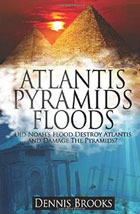
“Researchers have many questions regarding both the Great Flood and Atlantis: Which areas were flooded? Where did the flood waters come from? What caused the flooding? How was Atlantis destroyed? Where was Atlantis located?
The short answers: Noah’s Flood was caused by tsunami waves that covered all the costal areas around the Atlantic Ocean.
They also flooded the Mediterranean Basin temporarily raising sea level above 600 feet.
The tsunamis were created by comet fragments that landed in the ocean and within the Americas.
Some estimations claim that over 500,000 comet fragments hit the Americas. The craters are called Carolina Bays.
These craters are concentrated along the Atlantic seaboard within the coastal states of Delaware, Maryland, New Jersey, North Carolina, South Carolina, Virginia, Georgia, Florida, and as far away as Nebraska.
Atlantis was part of Plato’s boundless continent, North America. Plato: ‘. . .and the surrounding land may be most truly called a boundless continent.”
Get This Book From:
Amazon.com
Amazon.co.uk
“Voices of the Rocks: A Scientist Looks at Catastrophes and Ancient Civilizations”
by
Dr Robert M. Schoch

Get This Book From:
Amazon.com
Amazon.co.uk
“The great 19th-century battle between catastrophists and uniformitarians seemed to end with the notion of global cataclysms being dismissed as a back door to the supernatural.
But the catastrophist theory has gradually become more and more plausible, so that now, less than a hundred years later, it is widely believed that mass extinctions are linked to meteor strikes.”
“Voyages of the
Pyramid Builders”
by
Dr Robert M. Schoch

Get This Book From:
Amazon.com
Amazon.co.uk
“Is it a mere coincidence that pyramids are found across our globe? Did cultures ranging across vast spaces in geography and time, such as the ancient Egyptians; early Buddhists; the Maya, Inca, Toltec, and Aztec civilizations of the Americas; the Celts of the British Isles; and even the Mississippi Indians of pre-Columbian Illinois, simply dream the same dreams and envision the same structures?
“Underworld: Flooded
Kingdoms of the
Ice Age”
by
Graham Hancock

Get This Book From:
Amazon.com
Amazon.co.uk
“From Graham Hancock, bestselling author of Fingerprints of the Gods, comes a mesmerizing book that takes us on a captivating underwater voyage to find the ruins of a lost civilization that’s been hidden for thousands of years beneath the world’s oceans. While Graham Hancock is no stranger to stirring up heated controversy among scientific experts, his books and television documentaries have intrigued millions of people around the world and influenced many to rethink their views about the origins of human civilization.
Now he returns with an explosive new work of archaeological detection. In Underworld, Hancock continues his remarkable quest underwater, where, according to almost a thousand ancient myths from every part of the globe, the ruins of a lost civilization, obliterated in a universal flood, are to be found.”
“Heaven’s Mirror”
by
Graham Hancock

Get This Book From:
Amazon.com
Amazon.co.uk
Hancock’s chief thesis in
“Heaven’s Mirror” is that numerous ancient sites and monuments – the pyramids of Mexico and Egypt, the ruins of Angkor Wat in Cambodia, the monuments of Yonaguni in the Pacific, and the megaliths of Peru and Bolivia – are situated in such a way, geodetically, that they point towards some separate and uniform influence, some lost civilization or “invisible college” of astronomer-priests.
“Eden in the East: The Drowned Continent of Southeast Asia”
by
Stephen Oppenheimer

Get This Book From:
Amazon.com
Amazon.co.uk
“A book that completetly changes the established and conventional view of prehistory by relocating the Lost Eden – the world’s 1st civilization – to S.E. Asia.
At the end of the Ice Age, SouthEast Asia formed a continent twice the size of India, which included Indochina, Malaysia, Indonesia and Borneo.
The South China Sea, the Gulf of Thailand and the Java sea, which were all dry, formed the connecting parts of the continent.
Geologically, this half sunken continent is the Shunda shelf or Sundaland.
He produces evidence from ethnography, archaeology, oceanography, from creation stories, myths and sagas and from linguistics and DNA analysis, to argue that this founder civilization was destroyed by a catastrophic flood, caused by a rapid rise in the sea level at the end of the last ice age.”
…
exclusive
…
October 2002
Morien Institute
illustrated interview with
Professor Masaaki Kimura
of the University of the Ruykyus,
Okinawa, Japan, regarding
the discovery of:
“Megalithic structures found underwater off the coast of
Yonaguni-jima, Japan”
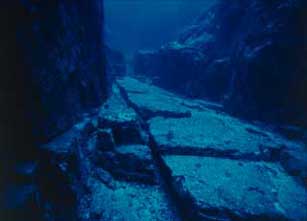
…
exclusive
…
June 2002
Morien Institute
illustrated interview with
Dr Paul Weinzweig
of Advanced Digital Communications,
Havana, Cuba, regarding
the discovery of:
“Megalithic urban ruins discovered off the coast of Cuba”
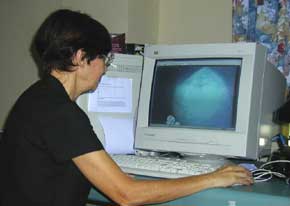
“Maritime Archaeology:
A Technical Handbook”
by
Jeremy Green
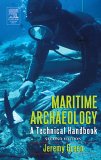
Get This Book From:
Amazon.com
Amazon.co.uk
“Jeremy Green’s systematic overview of maritime archaeology offers a step-by-step description of this fast-growing field.
With new information about the use of computers and Global Positioning Systems, the second edition of this handbook shows how to extract as much information as possible from a site, how to record and document the data, and how to act ethically and responsibly with the artifacts.
Treating underwater archaeology as a discipline, the book demonstrates how archaeologists, ‘looters’, academics, and governments interact and how the market for archaeological artifacts creates obstacles and opportunities for these groups.
Well illustrated and comprehensive in its approach to the subject, this book provides an essential foundation for everybody interested in underwater environments, submerged land structures, and conditions created by sea level changes.”
“Discoveries:
Underwater Archaeology”
by
Jean-Yves Blot
&
Alexandra Campbell
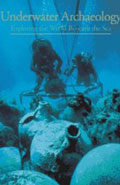
Get This Book From:
Amazon.com
Amazon.co.uk
“Some of the most exciting archaeological discoveries aren’t made by Indiana Jones wannabes prowling through the jungle in search of forgotten cities or by Egyptologists looking for lost passageways in the pyramids.
They are found by divers exploring shipwrecks such as the Titanic and the U.S.S. Monitor.
Every now and then they even uncover the remains of human settlements sleeping beneath the waves.
Underwater Archaeology is an inexpensive and colorful book about the people who do this work and what they sometimes bring to the surface–a great introduction to the subject.
It is another fine title in the Discoveries series of books published by Harry N. Abrams.”
“Man: 12, 000 Years Under the Sea
a Story of Underwater Archaeology”
by
Robert F. Burgess
&
George F. Bass
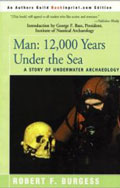
Get This Book From:
Amazon.com
Amazon.co.uk
“Man: 12,000 Years Under the Sea is the dramatic story of underwater archaeology.
The work looks back at Greek divers’ discovery of ancient statues in the sea, and covers the history of marine archaeology to the present, including the recovery of Ice Age Man’s 12,000-year-old remains from the bottom of Florida springs.
Burgess writes from his experience for an assured exciting read.
In Man: 12,000 Years Under the Sea Robert Burgess gives us a peak at . . . the work done by sponge divers, treasure hunters and underwater archaeologists.
The excitement and hazard of underwater exploration is so clearly described that I was tempted to get a diving suit to join them. This book is more than intriguing, it is a necessity.”
|